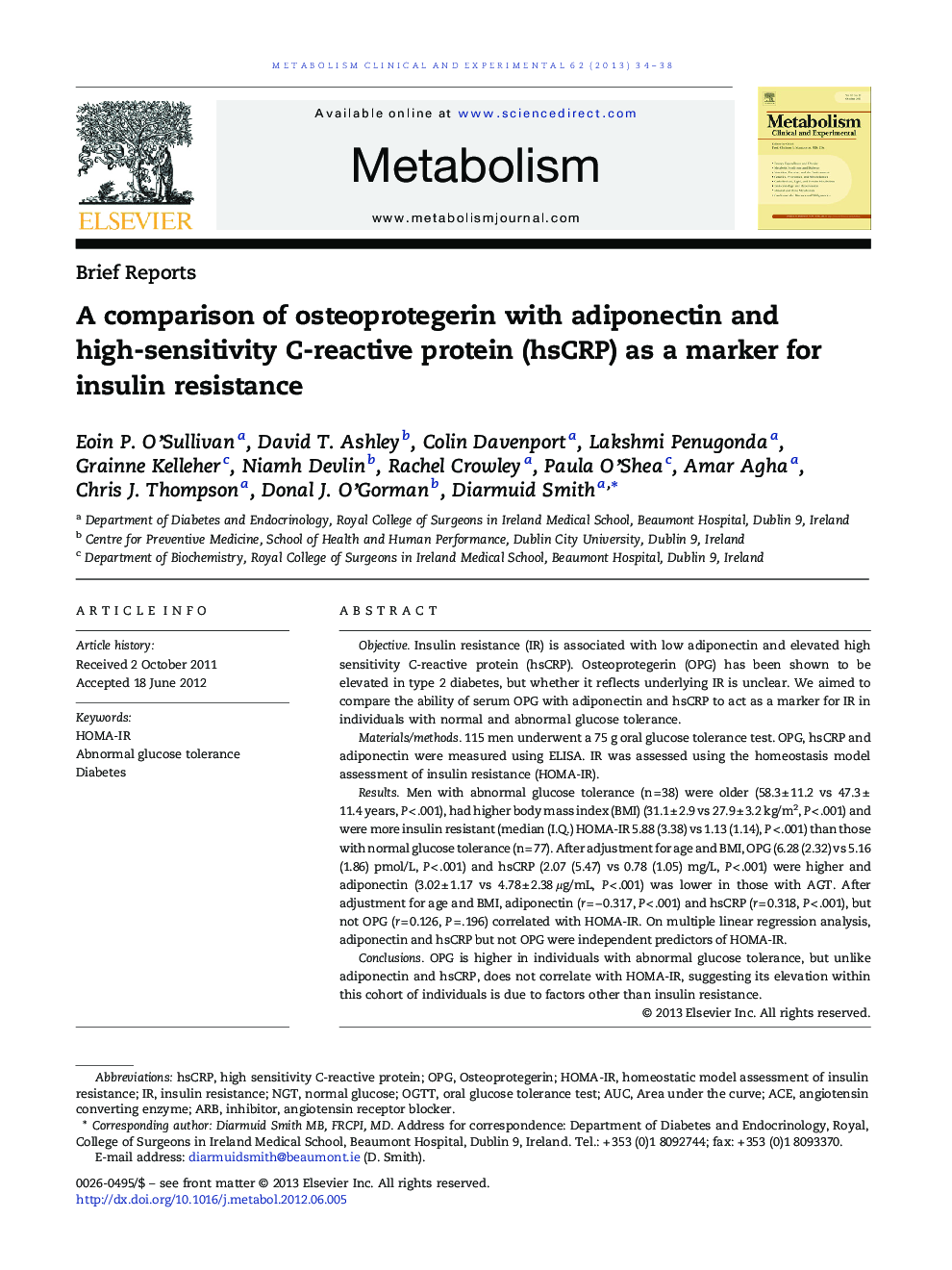| Article ID | Journal | Published Year | Pages | File Type |
|---|---|---|---|---|
| 2805960 | Metabolism | 2013 | 5 Pages |
ObjectiveInsulin resistance (IR) is associated with low adiponectin and elevated high sensitivity C-reactive protein (hsCRP). Osteoprotegerin (OPG) has been shown to be elevated in type 2 diabetes, but whether it reflects underlying IR is unclear. We aimed to compare the ability of serum OPG with adiponectin and hsCRP to act as a marker for IR in individuals with normal and abnormal glucose tolerance.Materials/methods115 men underwent a 75 g oral glucose tolerance test. OPG, hsCRP and adiponectin were measured using ELISA. IR was assessed using the homeostasis model assessment of insulin resistance (HOMA-IR).ResultsMen with abnormal glucose tolerance (n = 38) were older (58.3 ± 11.2 vs 47.3 ± 11.4 years, P < .001), had higher body mass index (BMI) (31.1 ± 2.9 vs 27.9 ± 3.2 kg/m2, P < .001) and were more insulin resistant (median (I.Q.) HOMA-IR 5.88 (3.38) vs 1.13 (1.14), P < .001) than those with normal glucose tolerance (n = 77). After adjustment for age and BMI, OPG (6.28 (2.32) vs 5.16 (1.86) pmol/L, P < .001) and hsCRP (2.07 (5.47) vs 0.78 (1.05) mg/L, P < .001) were higher and adiponectin (3.02 ± 1.17 vs 4.78 ± 2.38 μg/mL, P < .001) was lower in those with AGT. After adjustment for age and BMI, adiponectin (r = − 0.317, P < .001) and hsCRP (r = 0.318, P < .001), but not OPG (r = 0.126, P = .196) correlated with HOMA-IR. On multiple linear regression analysis, adiponectin and hsCRP but not OPG were independent predictors of HOMA-IR.ConclusionsOPG is higher in individuals with abnormal glucose tolerance, but unlike adiponectin and hsCRP, does not correlate with HOMA-IR, suggesting its elevation within this cohort of individuals is due to factors other than insulin resistance.
